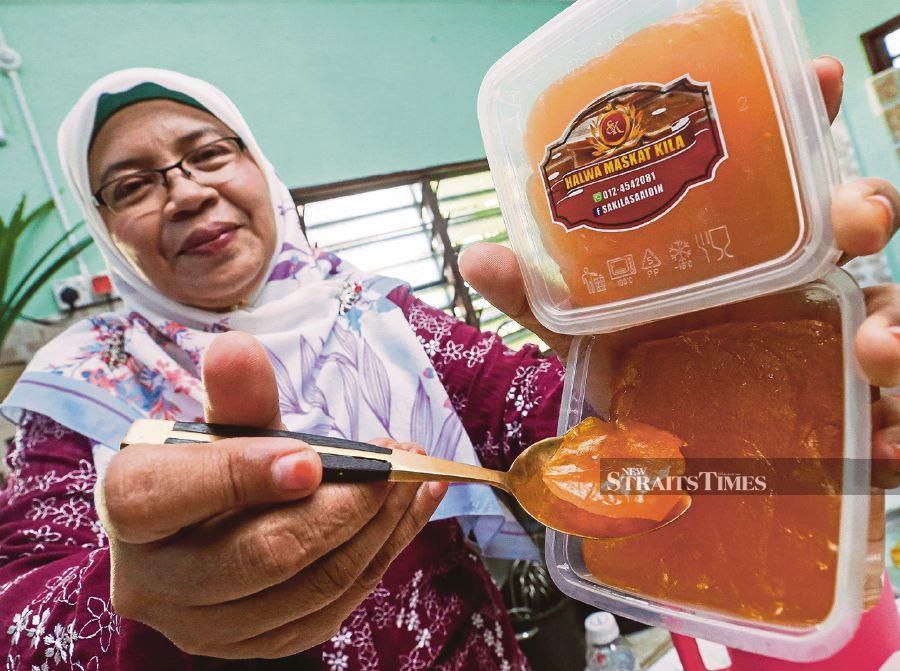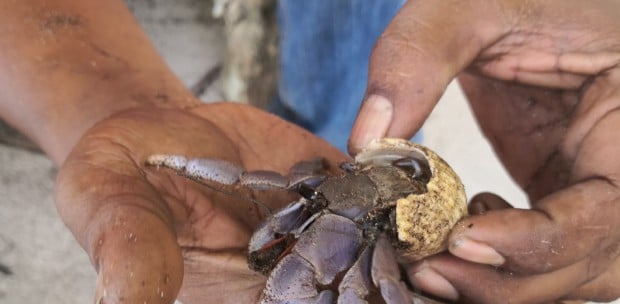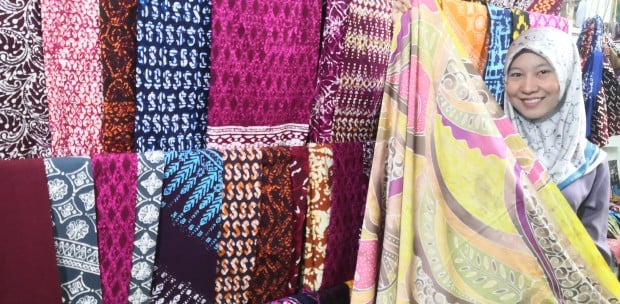MANY may not be familiar with 'halwa maskat'. In the 1980s and 1990s, this Malay dessert was very popular, especially in the northern part of the peninsula, due to its texture, which is similar to 'dodol'.
It is mainly served during festivities, such as Hari Raya Aidilfitri and Hari Raya Aidiladha.
WHAT IS 'HALWA MASKAT'
'Halwa maskat' is a square-shaped sweet treat, similar to jelly, made from flour, cooking oil and sugar.
The time-consuming preparation, from preparing the flour to stirring the mixture, could be a reason why this treat is losing its popularity.
The flour needs to be fermented for at least 24 hours before being stirred over a slow fire for four hours non-stop to prevent the mixture from becoming crusty and steamy.
For 3kg of fermented flour, only one-third, known as 'sagu tepung gandum', ends up in the cooking pot, free of gelatin.
MAKING IT
Nor Sakila Saaidin, 52, who sells 'halwa maskat' under the brand name Halwa Maskat Kila, said the longer the flour is fermented, the nicer the treat tastes.
For Hari Raya Aidiladha, the mother of four has to rush to complete more than 3,000 containers of halwa maskat.
Besides selling them to friends and colleagues, she also places her halwa maskat in restaurants and food vendors, and sells them on TikTok (Sakila Kasih) and Facebook (Sakila Saaidin).
Nor Sakila picked up the skill from her grandmother and subsequently her mother.
"I love eating it. Since I was small, I have been helping my mother prepare food and treats. 'Halwa maskat' is the hardest and longest to prepare.
"My mother would usually prepare a huge amount to be given away to relatives and friends during Hari Raya Aidiladha.
"So I was always there to help and finally mastered the art of making 'halwa maskat'.
"It was a compliment when my mum told me that my 'halwa maskat' has the same taste as hers," she said at her home in Kota Aur here.
Nor Sakila, who has been making 'halwa maskat' for the past five years, said when she first started on her own (without her mother's supervision), she used only a small copper pot for cooking.
"As time went by and with more people placing orders, I looked for a bigger copper pot.
"I finally found the right one in Terengganu.
"And because the mixture needs constant stirring, I placed an order for a customised machine to make my job easier. I spent about RM13,000 for both."
She sells two types of halwa maskat: original and one with mixed nuts and raisins.
She had also experimented with making 'halwa maskat' with durian and it was a success.
"I am planning to research other flavours, such as pandan, chocolate, coffee, Milo and strawberry."
TEACHING THE YOUNG
Nor Sakila teaches young people how to make 'halwa maskat'.
"I want them to produce 'halwa maskat' so that future generations will also get to eat it."
'Halwa maskat' is believed to have originated from the Middle East.
Nor Sakila is often invited to share her skill in making 'halwa maskat' during events.
She received the Anugerah Usahawan Negeri Pulau Pinang in Melaka recently.
Besides halwa maskat, Nor Sakila, who works full-time in a factory in Prai, also makes ʻputu berasʼ, ʻputu kacangʼ and ʻkuih bakarʼ.
She is assisted by her four children.
She also has designed halwa maskat for "hantaran".






